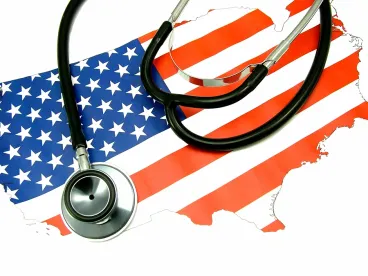Attendees of the annual Moss Adams Health Care Conference held in Las Vegas on November 7th and 8th, were treated to a heated exchange between political all-stars Karl Rove and James Carville over a variety of topics including the likely impeachment proceedings against President Trump, US policy in Syria and the upcoming elections (and the recently announced entry of yet another Democratic presidential candidate—Michael Bloomberg). But at the top of everyone’s minds in the audience were questions over healthcare policy and specifically Elizabeth Warren’s Medicare-for-All plan, with an estimated price tag of $34 trillion. It turned out that Karl and James were in lockstep agreement on the issue— “It makes no sense. She is just completely insane!” Carville screamed. The audience laughed. But earlier, several conference speakers opined that some form of government mandated universal healthcare program could very well happen.
Ken Leonczyk, Executive Partner of the Advisory Board, noted in his “State of the Industry” presentation that 56% of survey respondents support a national health plan. Declining insurance coverage, worsening public health, and unaffordability have left many Americans feeling there is only one way out—government intervention. The average annual cost of employer-sponsored coverage for a family in 2019 is $20,000 and climbing. This trajectory is clearly unsustainable. But is a government takeover of healthcare the right answer? Or can market-based reforms to the payment and provision of healthcare services bend the cost curve and facilitate greater access to healthcare services? These two questions represent the bookends of the spectrum of possible outcomes for healthcare in the United States. And as Ken’s presentation so clearly depicted, we are at a crossroads: revolution or reformation?
In support of reformation, there are notable examples of progress – consider Walmart. With approximately 1.5 million employees in the United States, the retail giant has aggressively moved to expand access to care and provide affordable healthcare services to patients in need. Walmart recently opened a 10,000 square foot health center in Georgia, co-located with a retail Supercenter. By partnering with local providers, the Walmart Health center delivers a variety of health and wellness services, including primary care, counseling, dental, optometry, hearing, and community health services all in one facility, conveniently located alongside the retail store. Walmart has also announced plans to expand that concept to additional locations in the coming months. These Health Centers will provide affordable, transparent pricing for key health services for local families, regardless of insurance status.
There are plenty of other examples out there—employers, health plans, health systems and providers testing the waters. The capital markets and private equity are playing their part as well by gladly financing much of these innovative changes. Of course the most influential change-agent today is CMS. The government is in a regulatory race to eliminate the fee-for-service system and replace it the with various risk and value-based reimbursement programs. Ken had some great slides on the potential impact of AI applications on healthcare. Of particular note was the idea of automated diagnosis and treatment plans and the “self-driving” hospital. By its reaction, the audience seemed to agree that we are at the cusp of something big. Hopefully, it is something we can be proud to pass on to the next generation.



 />i
/>i

